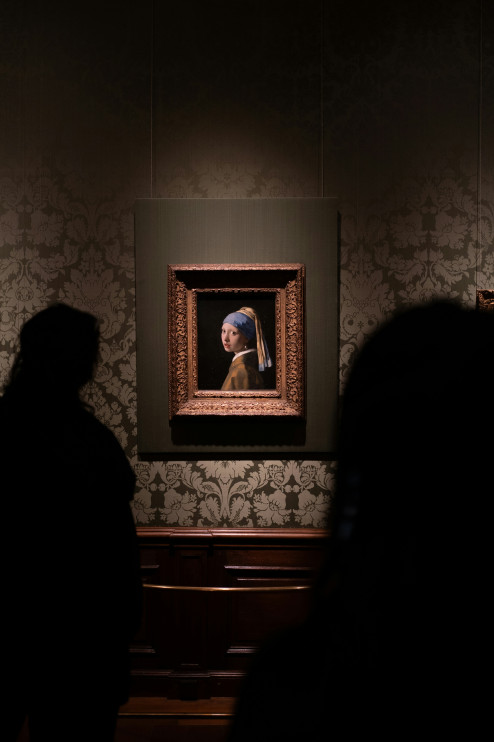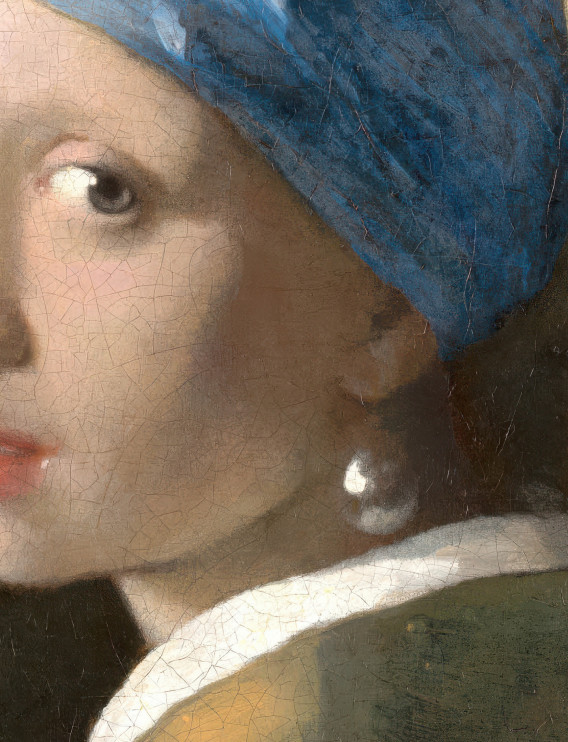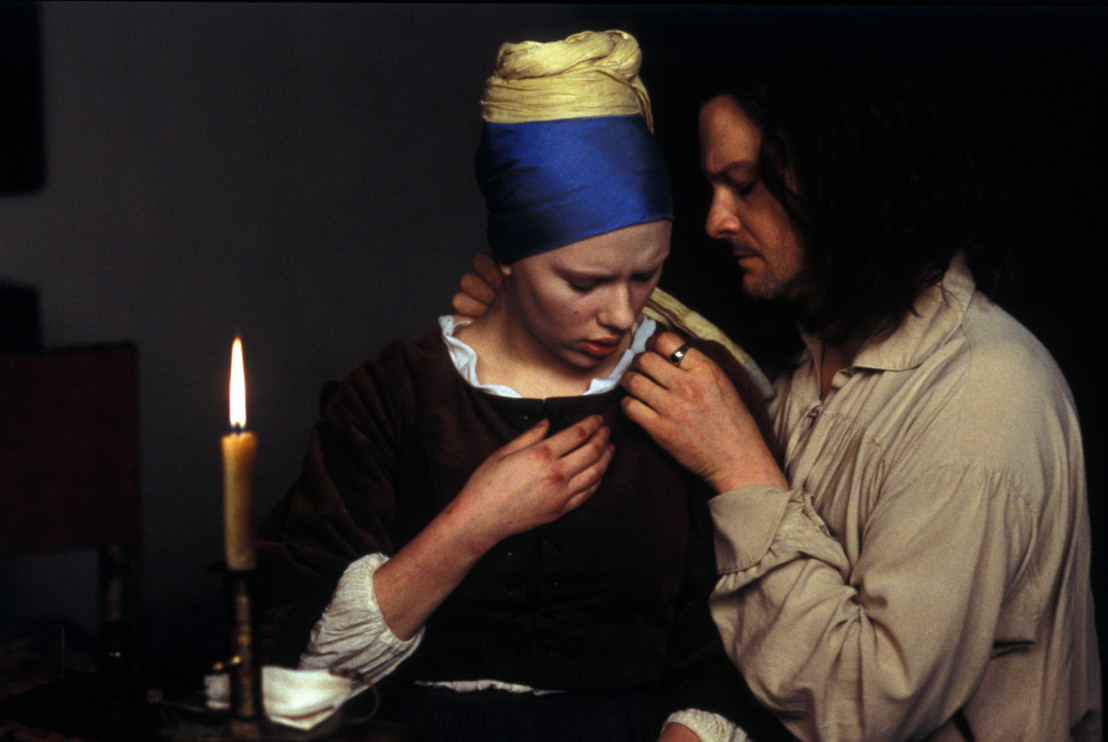Here are 17 secrets from Johannes Vermeer's "Girl with a Pearl Earring." See if you know them all.

Johannes Vermeer's "Girl with a Pearl Earring" is a portrait of a young woman in half-profile, wearing a distinctive turban and a large, shiny, teardrop-shaped earring resembling a pearl. Her gaze is full of mystery and captures the viewer's attention. Painted in oil on canvas, it was likely created around 1665.
In the history of art, it is considered one of the most important and intriguing works. This is because it was not only painted by the master Johannes Vermeer but also because it holds many secrets.
1. A small image with great powerIt may come as a surprise, but the painting measures approximately 44.5 cm by 39 cm, making it a small work. Despite this, its expressive power and the intensity of the figures' gaze captivate the viewer, regardless of its size. This compact form makes the painting feel more intimate and personal. It was painted in oil on canvas.
2. Nobody knows who the girl with the pearl earring wasFor centuries, no one has determined the identity of the girl depicted in Vermeer's painting, which is considered one of the most important features of the work. It remains unclear whether she was a model, a servant, the artist's daughter , or perhaps a completely invented figure. This uncertainty adds depth to the painting and allows each viewer to weave their own stories, independent of the passage of time.
3. Could the girl in the painting be an artist?In 2014, art historian Benjamin Binstock advanced an intriguing hypothesis that sheds new light on Vermeer's work. He suggests that Maria, the painter's eldest daughter, may not only have been the model for "Girl with a Pearl Earring" but also the creator of as many as one-fifth of the paintings attributed to her father, owing to the differences in style and technique between the works.
Binstock lists these as "Lady and Maid," "Girl with a Red Hat," and "Woman with a Lute." Interestingly, a familiar pearl appears in all of these compositions, which may be a subtle hint of the same model or painter's hand.
 Girl with a Pearl Earring by Jan Vermeer / Unsplash - Fang Guo
Girl with a Pearl Earring by Jan Vermeer / Unsplash - Fang GuoThe turban the girl wears is painted using ultramarine, one of the most expensive pigments of the 17th century, obtained from the semi-precious stone lapis lazuli.
This intense blue was rarely used due to its expense. Vermeer often used ultramarine even in times of scarcity, which emphasized the importance of his works. He was likely able to use it thanks to the support of his generous patron, Pieter van Ruijven.
5. Modern pigment research reveals the true colors of the workThe painting's background originally had a brilliant green hue, achieved by mixing indigo and vegetable weld dye. Over time, this layer degraded, turning the background the deep black we know today. This process changed the atmosphere of the painting, giving it a more dramatic character.
6. Did Vermeer use technology to paint his pictures?There's a theory that Vermeer may have used a camera obscura. This helped the artist precisely reproduce light and perspective, crucial to the realism of his paintings. Experiments by modern artists have shown that mirrored arrangements can achieve effects similar to those in Vermeer's works. Although there's no definitive evidence, this theory is widely accepted.
7. "The Girl with the Pearl Earring" wasn't always "The Girl with the Pearl Earring"The painting's common name wasn't always so obvious. The work has also been called "Girl with a Turban," "Head of a Girl in a Turban," "Young Girl in a Turban," or "Head of a Young Girl." Ultimately, it became known as "Girl with a Pearl Earring" due to its rather mysteriously styled jewelry.
 Girl with a Pearl Earring - 1665 - Jan Vermeer - one of the most famous paintings in the history of art / Heritage Art/Heritage Images / Getty Images
Girl with a Pearl Earring - 1665 - Jan Vermeer - one of the most famous paintings in the history of art / Heritage Art/Heritage Images / Getty ImagesIn fact, it's impossible to be 100% certain that the famous earring in the painting is a pearl. There are theories that it's an imitation made of glass or simply a painted light effect.
Real pearls of such a large size and shape were extremely rare and expensive in the 17th century. The painterly effect of light on the earring is masterful and can imitate a natural luster without the need for a real pearl. This is a testament to Vermeer's technique and ingenuity.
In 2014, Vincent Icke, a professor of theoretical astronomy, wrote in New Scientist that the light actually reveals the truth about the jewelry, proving it is not a pearl.
9. The Spiritual Meaning of Jewelry from the PictureAssuming Vermeer actually had a pearl in mind when painting the painting, some scholars have immediately found a deeper, spiritual meaning in it. According to interpretations inspired by the writings of St. Francis de Sales, a bishop from the early 17th century, the pearl could symbolize purity and spiritual sensitivity.
The ear it adorns is seen as a metaphorical space that must be protected from impurity. In this view, the earring is not merely an ornament, but a symbol of spiritual purity and the ideal of femininity in the Christian sense.
10. The famous earring appeared not only in this workVermeer was known for reusing props , models, and settings in his works. A similar earring appears in the painting "Woman Writing a Letter," for example , confirming the practice of economy and coherence in his work. Such repetition of elements helped build the painter's distinctive style.
11. Did the girl in the painting have eyelashes?Modern research on Vermeer's paintings has revealed that the artist originally painted the sitter's eyelashes, which had worn away or faded over time. These details were made visible using infrared reflectography, a technique that allows us to see beneath the surface of the paint layers. This discovery provides a deeper understanding of Vermeer's creative process and his attention to detail. The wear and tear of these elements is a natural part of the aging process.
12. Why is "Girl with a Pearl Earring" called the "Mona Lisa of the North"?One of Vermeer's most important works has earned the rather peculiar nickname "Mona Lisa of the North." This is due to the similarity in facial expression to Leonardo da Vinci's famous work. Both the enigmatic smile and the intense gaze make the portrait evoke strong emotions and interest. This metaphor emphasizes the timeless nature and universality of Vermeer's work.
13. A painting by an anonymous artist"Girl with a Pearl Earring" is unsigned , which initially raised doubts about its authorship. However, it is now clearly attributed to Vermeer thanks to technical and stylistic research. The absence of a signature was common practice at the time, especially for smaller, more personal works.
14. "Girl with a Pearl Earring" wasn't always so popularFor nearly two centuries, Vermeer's work remained in the shadows, and his paintings were practically forgotten. It was not until the second half of the 19th century that the French art critic Théophile Thoré-Bürger rediscovered the artist and restored his name to the world. It was thanks to his research that "Girl with a Pearl Earring" gained recognition as a work by Vermeer, significantly increasing its value and fame. From that moment on, the painting began its new life as an icon of Dutch painting.
15. A painting sold for next to nothing before it became popular.Vermeer's work was initially sold for a very low price. In 1881, it was purchased by the Dutch officer Arnoldus Andries des Tombe for just two guilders, plus a small surcharge. At that time, Vermeer's work was still little appreciated and did not command high prices on the art market . Today, "Girl with a Pearl Earring" is considered one of the most valuable paintings in the world.
16. Where is "Girl with a Pearl Earring" currently located?Since 1902, the painting has been housed at the Mauritshuis Museum in The Hague, where it is one of its most important attractions. The museum maintains it and displays it to millions of visitors annually. "Girl with a Pearl Earring" is a symbol of Dutch art and national pride. In recent years, it has been loaned to exhibitions in Japan, the United States, and Italy, but the museum has decided to permanently retain it in The Hague.
 Girl with a Pearl Earring - 2003 film / still from the film
Girl with a Pearl Earring - 2003 film / still from the film



